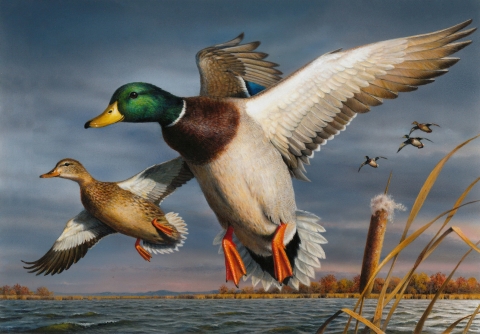Hunting on national wildlife refuges is a tradition that dates back to the early 1900s. Today, more than 330 refuges are open to the public for hunting across the country. Here in the midwest, national wildlife refuges and waterfowl production areas are a huge part of this tradition. We welcome people of all backgrounds and abilities to experience challenging hunting in amazing places. Here are some highlights of hunting on National Wildlife Refuge System lands.
Hunting across the landscape
Whether it’s in the northern reaches of Michigan's Upper Peninsula out among the coniferous bogs of Seney National Wildlife Refuge or in Illinois at the bottomland hardwood forests of Two Rivers National Wildlife Refuge, refuge staff have been collaborating with partners to bring Americans public hunting opportunities for decades. More than 50 midwestern refuges are open to hunting every year. Whether you prefer a duck blind, deer stand or working your bird dog, refuges offer hunt experiences for all abilities and interests. Many refuges offer special events for new hunters, as well as hunters with mobility and vision impairments.
Hunters fund conservation
Hunters, anglers and recreational shooters contribute more than $800 million to conservation through equipment sales each year. This money is used to fund wildlife and habitat conservation and management grants. In the midwest, the hunter education grant program has resulted in more than 175,000 students annually completing hunter safety and ethics courses. This program also provides additional hunter education opportunities, including mentored hunts, field to table classes and classes designed for urbanites, women and millennials. These popular classes reflect interest in building stronger connections with nature and access to local, sustainable food.
Banding together for ducks
Thanks to duck banding and a network of biologists, hunters and birders across North America, we know a lot about species lifespans, populations and migration patterns. Banding data is used as a part of adaptive harvest management, the annual process of setting waterfowl hunting regulations in the United States. Duck band reporting is used to estimate population size and calculate harvest rates, which helps ensure the harvest of migratory game birds is sustainable and the hunting tradition can continue for future generations.
Bringing together art, culture and conservation
Hunters, birders and stamp collectors help protect wetlands across the country by purchasing Federal Duck Stamps. Since 1934, almost $1 billion has been raised to protect more than 6 million acres for waterfowl habitat nationally. Here in the midwest, stamp sales have brought in almost $250 million to protect more than half a million acres of important habitat. Learn more about how we put duck stamp dollars to work.
National wildlife refuges and waterfowl production areas across the midwest are places for you to continue the tradition of hunting and fishing. We look forward to providing safe, challenging hunts on the lands we manage and collaborating with local nonprofit conservation groups including Ducks Unlimited, Pheasants Forever and our state conservation partners.








